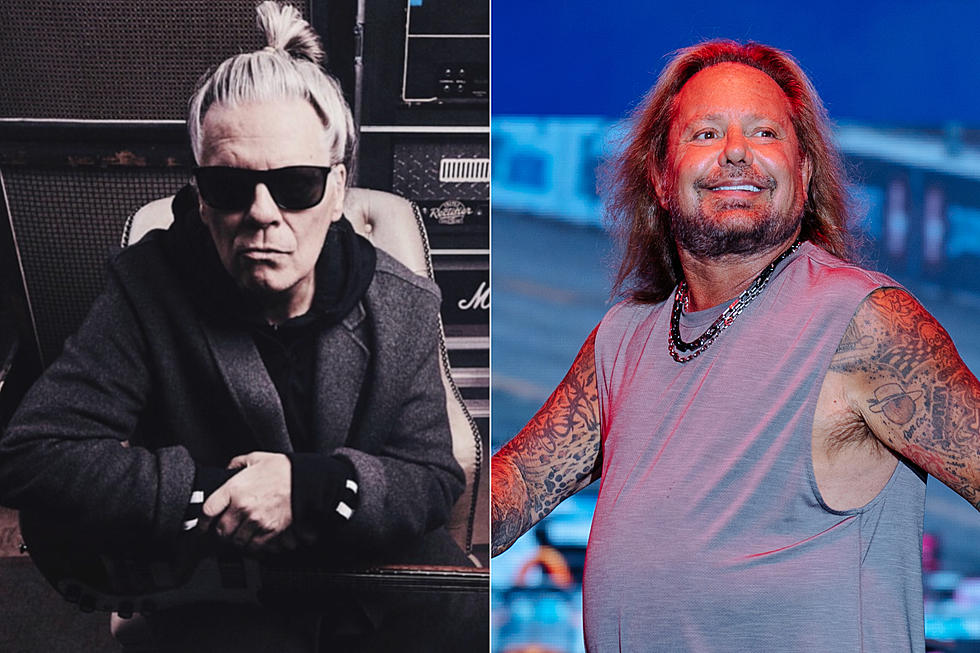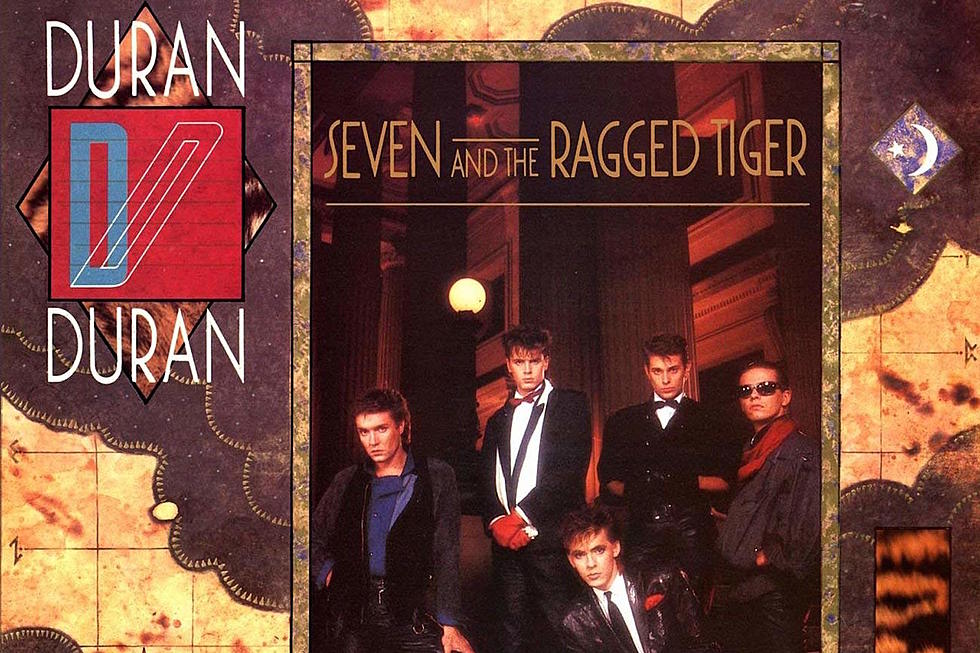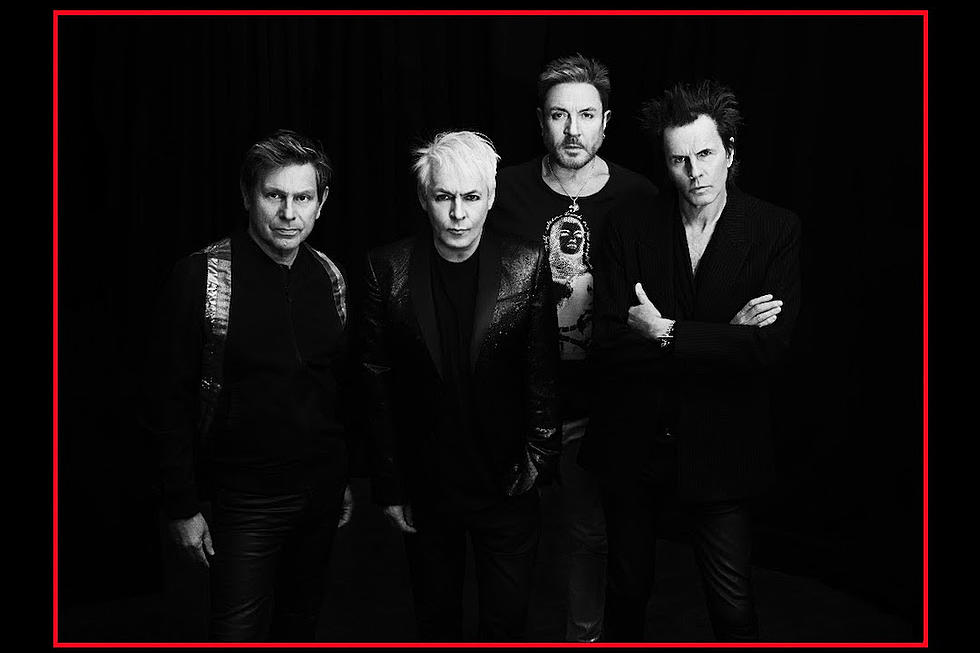
40 Years Ago: Duran Duran Release the Masterful ‘Rio’
On May 10, 1982, Duran Duran released their second album, Rio.
Issued less than a year after the Birmingham quintet's self-titled debut, Rio was a testament to the band's chemistry and ambition, and how quickly they evolved as musicians.
Although faint imprints of Duran Duran's influences were evident — the music nodded to, among others, Japan, Roxy Music, pre-Dare Human League and '70s U.K. guitar rock — Rio sounded like nothing else released at the time.
In fact, save for maybe the title track and "Hungry Like the Wolf," the LP wasn't an obviously pop-oriented record. Rio combined elements of post-punk darkness, experimental synth-pop, moody gothic rock, crisp disco and crunchy glam. John Taylor and Roger Taylor were a formidable rhythm section, locked into grooves with nimble precision. Nick Rhodes' atmosphere-heavy synth wizardry provided artsy textures, while Andy Taylor's blazing guitar acrobatics added ferocity and heft.
Singer Simon Le Bon, meanwhile, admired Joy Division and the Doors' Jim Morrison. In a nod to these groups, the LP's lyrics explored several major themes — chasing your dreams, pursuing a crush, finding your place in the world, providing solace to a friend — in ways that were mysterious, dark and poetic.
"Lonely in Your Nightmare" especially stood out: Melancholy and probing, the song has an empathetic protagonist who sees the potential in someone else ("Because you're lonely in your nightmare let me in / Because there's heat beneath your winter let me in") and gently requests a connection.
Watch Duran Duran's 'Hungry Like the Wolf' Video
Rio came together over many months. The band settled on the album's name long before the music came together, inspired by the globe-trotting they did in the wake of their debut album. (Mostly: The title track evolved out of a song that had been kicking around Duran Duran's repertoire across different lineups and years.) On Aug. 28, 1981, Duran Duran cut demos of three Rio songs at EMI's Manchester Square studios in London: "My Own Way," "New Religion" and "Last Chance on the Stairway." These demos hinted at a darker direction, especially "New Religion." That song boasted hollowed-out synths, a vivacious bass and scorching guitar parts, as well as some of Le Bon's most cryptic lyrics.
"It was a serious piece of work, wasn't it?" drummer Roger Taylor said of the song in a 2017 interview. "It was a deep cut for a band that was really considered as a teen band."
The meditative "Last Chance on the Stairway" made the cut for Duran Duran's live set in late 1981, introduced by Le Bon as "trying to get ahold of a girl at a party" in one BBC performance. Duran Duran had also been playing "My Own Way" live since the demo session. That song was issued as a single before the end of the year in a drastically different, brisker form highlighted by disco-influenced strings.
The thoughtful ballad "Save a Prayer" emerged in their Birmingham rehearsal space, after Rhodes tinkered with new gear and Andy Taylor was inspired to come up with guitar accompaniment. The band then demoed the song with Bob Lamb, a musician who helmed UB40's hit 1980 album Signing Off. (A snippet of this demo surfaced in a 2015 news story.)
Music in hand, Duran Duran gathered at George Martin's AIR Studios in London to record Rio in early 1982 with producer and engineer Colin Thurston. (Much to everyone's delight, Paul McCartney famously was recording at the same time and would say goodnight to the band.) The band decided to re-record "My Own Way" for Rio, building off the album's demo instead.
However, the Rio demos overall were in good shape, so the recording process itself went smoothly. Although drummer Roger Taylor occasionally layered on digital accents from then-new Simmons drums and John Taylor added occasional fretless bass, Rio was a traditional rock record featuring straight-ahead instrumentation: guitar, bass, drums, keyboards and vocals. That helped ensure the album's music sounded (and continues to sound) more timeless than other LPs of the time.
Duran Duran didn't shy away from experimentation, however. In the studio, "Rio" gained a mysterious intro after Rhodes dropped metal rods on the strings of a grand piano and then flipped over the tape of the recording. Le Bon was inspired to add vibraphone to "New Religion" and a snazzy marimba interlude on the bridge of "Last Chance on the Stairway." (The latter song also had the sound of a cigarette being lit and clinking glasses, both courtesy of Rhodes.) Saxophonist Andy Hamilton, meanwhile, added the famously festive solo on "Rio."
"The Chauffeur" also came together in the studio. Rhodes hunkered down in an auxiliary studio room and built a ghostly, gothic track using keyboards. Le Bon later joined him, bringing lyrics inspired by a 1978 visit to a kibbutz and some well-placed warbling on an ocarina.
The band went right from the studio to Sri Lanka, where they filmed videos for "Hungry Like the Wolf," "Save a Prayer" and "Lonely in Your Nightmare," and then on to Australia and Japan to kick off the Rio tour.
Their lives didn't slow down after that. In the U.K., Rio was an immediate smash, debuting at No. 4 on the charts and peaking at No. 2 behind a Madness hits compilation.
In the U.S., Rio took much longer to find success. Although the album received a favorable review from Billboard — Rio was described as "catchy, melodic and accessible," with tunes hewing toward "bright and sassy pop" — the LP debuted at No. 164 on the magazine's Top LPs & Tape chart for the issue dated June 5.
Rio slowly climbed up the chart over the coming weeks before stalling out at No. 122 in July and then sliding back down by August 1982. However, neither Duran Duran nor their record label gave up on the album. Months later, Rio hit the Top 10 of the Billboard Top LPs & Tape chart, peaking at No. 6 for seven weeks starting in March 1983.
Watch Duran Duran's 'Rio' Video
The album's eventual success came thanks to a combination of hard work and savvy marketing. For starters, Duran Duran toured the U.S. in the summer of 1982, playing headlining shows and opening for Blondie. The new cable channel MTV put the videos for "Hungry Like the Wolf" and then "Rio" into rotation in summer and fall 1982, which also drummed up interest. Dance clubs continued to embrace the band, leading to the release of a remix-heavy EP called Carnival. The Rio LP was also reissued twice, with different mixes of songs by David Kershenbaum that were more aligned with rock radio at the time.
When the dust cleared, Rio ended up as one major catalyst for the British Invasion that swept the U.S. in 1983 and 1984. Its striking cover — a Patrick Nagel painting that was then elevated by some design work from Malcolm Garrett — came to embody the '80s.
And for 2022 Rock & Roll Hall of Fame inductees Duran Duran, the album was the start of a very wild ride indeed. "The passage of time does allow you to look back with some good grace, and be a little more pragmatic about what things did, and what things meant," Rhodes told me in an interview for a "33 1/3" book on Rio. "And I think that all of us would say that the Rio album was what set us on our trajectory for not only the next decade but really the rest of our career."
Top 100 '80s Rock Albums
More From Ultimate Classic Rock









